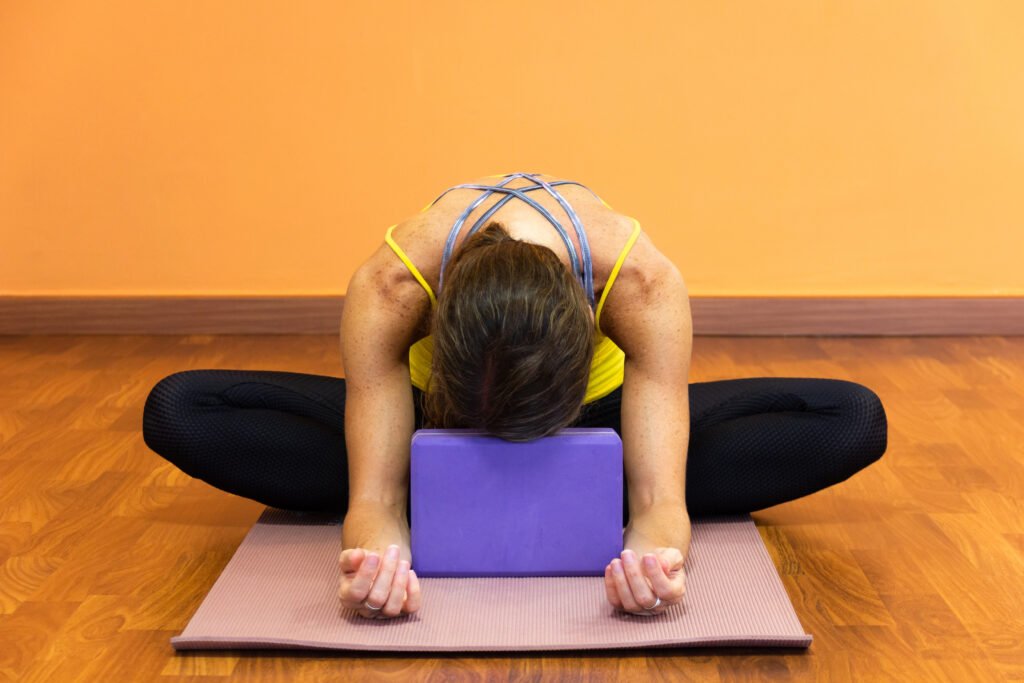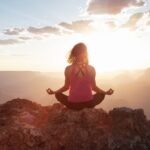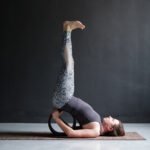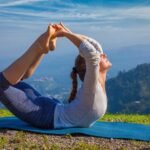In a fast-paced world where stress seems to lurk around every corner, Yin Yoga has emerged as a gentle yet powerful practice that invites us to slow down, breathe deeply, and reconnect with our bodies and minds. Unlike the dynamic flows of Vinyasa or the heat of Bikram, Yin Yoga offers a meditative approach, emphasizing long-held poses and deep relaxation. Whether you’re a seasoned yogi or a curious beginner, this article dives into the essence of Yin Yoga—its history, benefits, techniques, and why it’s capturing hearts worldwide. Get ready to unwind and discover why Yin Yoga might just be your new favorite practice!
What Is Yin Yoga?
Yin Yoga is a slow, introspective style of yoga that focuses on holding passive poses for extended periods, typically 3 to 5 minutes or longer. Targeting the body’s connective tissues—ligaments, tendons, and fascia—rather than muscles, Yin Yoga encourages deep stretching and flexibility while fostering mindfulness. Poses are often seated or reclining, performed with relaxed muscles, allowing gravity and time to work their magic. Inspired by Taoist principles, Yin Yoga balances the “yin” (calm, inward energy) with the “yang” (active, outward energy) of more dynamic yoga styles.
The practice is accessible to all levels, requiring no prior yoga experience. Props like bolsters, blankets, and blocks are often used to support the body, making poses comfortable and sustainable. Yin Yoga is as much a mental journey as a physical one, inviting practitioners to cultivate patience, awareness, and acceptance through stillness.
A Brief History of Yin Yoga
Yin Yoga’s roots trace back to ancient Chinese philosophy, particularly the Taoist concept of yin and yang—opposing yet complementary forces in nature. While yoga itself originates from India, Yin Yoga as we know it today was developed in the late 1970s by martial artist and yoga teacher Paulie Zink. Zink combined Taoist yoga principles, inspired by his martial arts training, with long-held poses to enhance flexibility and energy flow. His practice emphasized the stimulation of “chi” (life energy) through the body’s meridians, a concept borrowed from Traditional Chinese Medicine.
In the 1980s and 1990s, Paul Grilley, a student of Zink, refined the practice, focusing on its anatomical benefits and accessibility. Grilley’s collaboration with Sarah Powers, who integrated mindfulness and Buddhist psychology, helped shape Yin Yoga into the meditative practice it is today. Their work popularized Yin Yoga in the West, blending ancient wisdom with modern anatomy and mindfulness techniques. Today, Yin Yoga is taught globally, with teachers like Bernie Clark and Jo Phee further expanding its reach through workshops and trainings.
Why Is Yin Yoga So Popular?
Yin Yoga’s rise in popularity can be attributed to its unique ability to meet the needs of our high-stress, overstimulated world. Here’s why it’s resonating with so many:
- Counterbalance to Modern Life: In an era of constant hustle, Yin Yoga offers a rare opportunity to slow down. Its emphasis on stillness and mindfulness provides a much-needed antidote to burnout, appealing to those seeking calm in a chaotic world.
- Accessibility for All: Yin Yoga’s gentle approach makes it inclusive for beginners, seniors, and those with physical limitations. Props and modifications ensure everyone can participate comfortably.
- Mental Health Benefits: The meditative nature of Yin Yoga reduces anxiety and promotes emotional resilience. Holding poses for several minutes encourages practitioners to sit with their thoughts, fostering self-awareness and acceptance.
- Physical Healing: By targeting connective tissues, Yin Yoga improves joint health, flexibility, and circulation, making it a favorite among athletes and those recovering from injuries.
- Complementary Practice: Many yogis incorporate Yin Yoga to balance dynamic styles like Ashtanga or Power Yoga, creating a holistic practice that nurtures both strength and surrender.
Social media and wellness platforms have also amplified Yin Yoga’s appeal, with influencers sharing serene images of candlelit Yin classes and cozy home setups. Retreats and festivals, like those listed on yoga-search.com, often feature Yin Yoga sessions, drawing in curious practitioners eager to experience its magic.
Benefits of Yin Yoga
Yin Yoga offers a wealth of physical, mental, and emotional benefits, making it a transformative practice for body and soul. Here are some key advantages:
Physical Benefits
- Improved Flexibility: Long-held poses gently stretch connective tissues, increasing range of motion in joints like the hips, spine, and shoulders.
- Joint Health: By applying gentle stress to joints, Yin Yoga promotes synovial fluid production, keeping joints lubricated and mobile.
- Enhanced Circulation: Relaxed poses improve blood flow, aiding in muscle recovery and reducing tension.
- Fascia Release: Yin Yoga targets the fascia, the body’s connective tissue web, helping to release tightness and improve overall mobility.
- Injury Prevention: By balancing flexibility and strength, Yin Yoga reduces the risk of injury, especially for athletes or those with repetitive strain.
Mental and Emotional Benefits
- Stress Reduction: The slow pace and focus on breath activate the parasympathetic nervous system, promoting relaxation and reducing cortisol levels.
- Mindfulness and Meditation: Holding poses encourages present-moment awareness, helping practitioners develop a meditative mindset.
- Emotional Release: Connective tissues can store emotional tension; Yin Yoga’s deep stretches may release suppressed emotions, fostering healing.
- Improved Sleep: The calming effects of Yin Yoga can alleviate insomnia and promote deeper, more restful sleep.
Energetic Benefits
- Balanced Energy Flow: Based on Traditional Chinese Medicine, Yin Yoga stimulates meridians, promoting the flow of chi and balancing the body’s energy.
- Inner Harmony: The practice cultivates a sense of calm and balance, aligning mind, body, and spirit.
Key Yin Yoga Techniques
Ready to try Yin Yoga? Here are some essential techniques to ensure a safe and rewarding practice:
- Find Your Edge: In each pose, ease into a depth that feels challenging but not painful. Your “edge” is where you feel a gentle stretch without straining. Listen to your body and avoid forcing yourself deeper.
- Stay Relaxed: Unlike active yoga styles, Yin Yoga requires relaxed muscles. Let gravity do the work, using props to support your body and maintain comfort.
- Hold Poses for Time: Most Yin poses are held for 3–5 minutes (or longer for advanced practitioners). Use a timer to stay present and avoid fidgeting.
- Use Props: Bolsters, blankets, blocks, and straps are your friends in Yin Yoga. They help you settle into poses comfortably, especially if you’re less flexible.
- Focus on Breath: Deep, slow breathing is key to staying present and calming the nervous system. Try diaphragmatic breathing or a 4-4-4 rhythm (inhale for 4, hold for 4, exhale for 4).
- Practice Patience: Yin Yoga is about surrender. If your mind wanders or you feel restless, gently bring your focus back to your breath or body sensations.
- Exit Slowly: After holding a pose, transition out mindfully to avoid discomfort. Move slowly into a neutral position, like lying on your back, before the next pose.
Sample Yin Yoga Poses
- Butterfly Pose: Sit with soles of feet together, knees falling outward. Fold forward gently, rounding the spine. Targets hips and lower back.
- Dragon Pose: A low lunge with one leg forward, knee over ankle, and back leg extended. Rest hands on blocks or the floor. Opens hips and groin.
- Threaded Needle: Thread one arm under the body, resting shoulder and head on the ground. Stretches upper back and shoulders.
- Supported Bridge: Lie on your back with a block or bolster under your sacrum. Relaxes the spine and opens the chest.
- Savasana with Props: Lie flat with a bolster under your knees and a blanket over your body for ultimate relaxation.
Tips for Practicing Yin Yoga
- Create a Calm Space: Practice in a quiet, dimly lit room with candles or soft music to enhance the meditative vibe.
- Start Small: If 3–5 minutes feels too long, begin with 1–2 minutes per pose and gradually increase.
- Join a Class: Look for Yin Yoga classes on yoga-search.com or local studios to learn proper alignment from certified instructors.
- Combine with Yang Practices: Pair Yin Yoga with dynamic styles like Vinyasa for a balanced routine.
- Listen to Your Body: If a pose feels too intense, back off or use more props. Yin Yoga is about ease, not strain.
Why You Should Try Yin Yoga
Yin Yoga is more than just a physical practice—it’s a journey into stillness, self-discovery, and balance. Its rise in popularity reflects a collective need for calm and connection in a hectic world. Whether you’re looking to improve flexibility, reduce stress, or simply carve out time for yourself, Yin Yoga offers a nurturing space to explore your inner landscape. Plus, it’s fun to sink into cozy props, breathe deeply, and let go of the day’s worries!
Ready to dive in? Check out yoga-search.com for Yin Yoga retreats, workshops, and classes near you. From serene studios to nature-immersed retreats, there’s a Yin Yoga experience waiting to help you find your calm. Roll out your mat, grab a bolster, and let the magic of Yin Yoga transform your practice. Namaste!






Leave a Reply